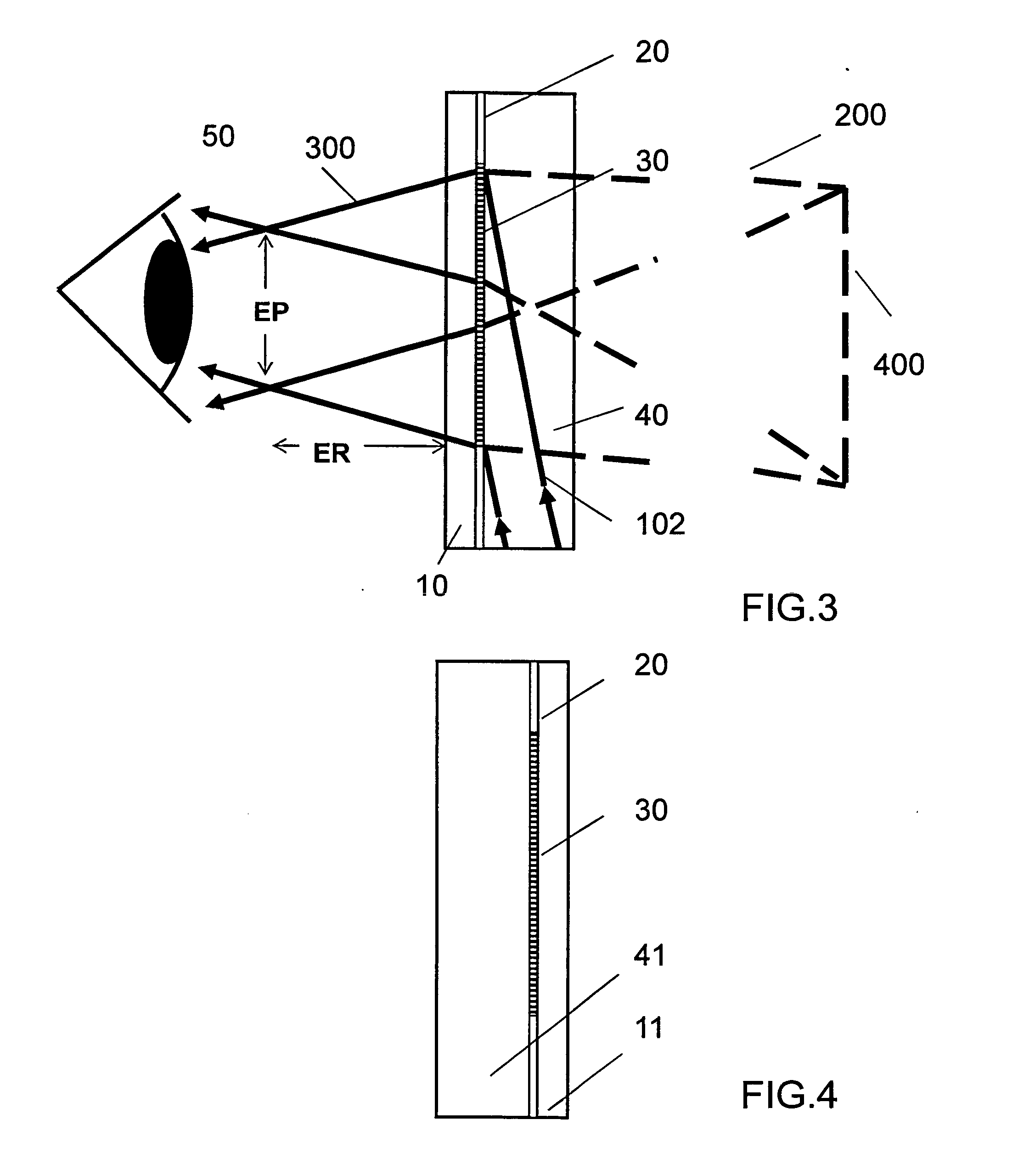Holographic Waveguide Display
a waveguide display and waveguide technology, applied in the direction of viewfinders, planar/plate-like light guides, instruments, etc., can solve the problems of cumbersome form factors, insufficient, and current wearable displays only manage to deliver see through, so as to minimize laser speckle
- Summary
- Abstract
- Description
- Claims
- Application Information
AI Technical Summary
Benefits of technology
Problems solved by technology
Method used
Image
Examples
Embodiment Construction
[0059]The invention will now be further described by way of example only with reference to the accompanying drawings.
[0060]FIG. 1 shows a schematic side elevation view of a portion of one eyepiece of a wearable display in one embodiment of the invention. Although a planar element is shown the complete eyepiece may have a curved or facetted surface. The portion of the display shown in FIG. 1 comprises a DOE 10 an HPDLC layer comprising flood cured region indicated by 20 surrounding at least one independently switchable SBG region indicated by 30 and a transparent substrate layer 40. The HPDLC layer is sandwiched between the substrate and the DOE. Said SBG regions may be information symbols. Alternatively, the SBG regions may be configured to provide two dimensional pixelated arrays. In each case the SBGs are confined to the symbol or pixel regions the display being perfectly transparent elsewhere. The SBG and DOE together encode the characteristics of a lens whose function will be ex...
PUM
| Property | Measurement | Unit |
|---|---|---|
| Bragg angle | aaaaa | aaaaa |
| refractive index | aaaaa | aaaaa |
| thicknesses | aaaaa | aaaaa |
Abstract
Description
Claims
Application Information
 Login to View More
Login to View More - R&D
- Intellectual Property
- Life Sciences
- Materials
- Tech Scout
- Unparalleled Data Quality
- Higher Quality Content
- 60% Fewer Hallucinations
Browse by: Latest US Patents, China's latest patents, Technical Efficacy Thesaurus, Application Domain, Technology Topic, Popular Technical Reports.
© 2025 PatSnap. All rights reserved.Legal|Privacy policy|Modern Slavery Act Transparency Statement|Sitemap|About US| Contact US: help@patsnap.com



